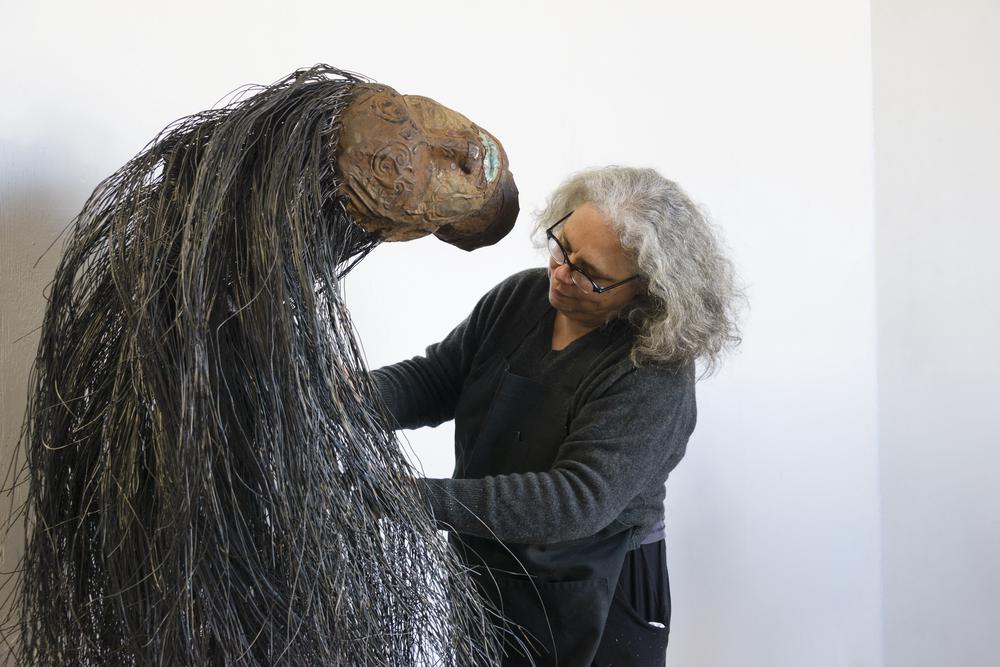Alison Saar. Convergent Histories
Alison Saar is a storyteller. In her sculptures, paintings, and prints, a woman’s body is a place of history and reflection. Incorporating found materials—like the tin-ceiling squares salvaged from demolished buildings in Harlem and recycled as skin in works like Deluge (2016)—she draws upon the cultural meanings embodied within objects. Overlapping experiences of the African diaspora, femininity, and personal narratives, she creates a sense of collective history within the female figure. Saar made Deluge—a sculpture of a woman’s head supported by a massive swell of hair made from baling wire—following an artist residency at the Joan Mitchell Center in New Orleans. Struck by the lasting devastation of Hurricane Katrina five years after it hit the city, she made a series of work on the history of the 1927 Great Mississippi Flood.1 The most destructive in American history, the flood forced many Black Southerners to flee, joining the Great Migration to cities in the Northeast, Midwest, and California. Both ravaged and mighty, the disembodied head in Deluge is a site of convergent and collective history.
Video made on the occasion of the exhibition Alison Saar: Silt, Soot and Smut, at LA Louver, Los Angeles, posted February 5, 2020, video, 8:43 minutes, available at youtube.com/watch?v=ukVx3NbaDic. ↩︎
